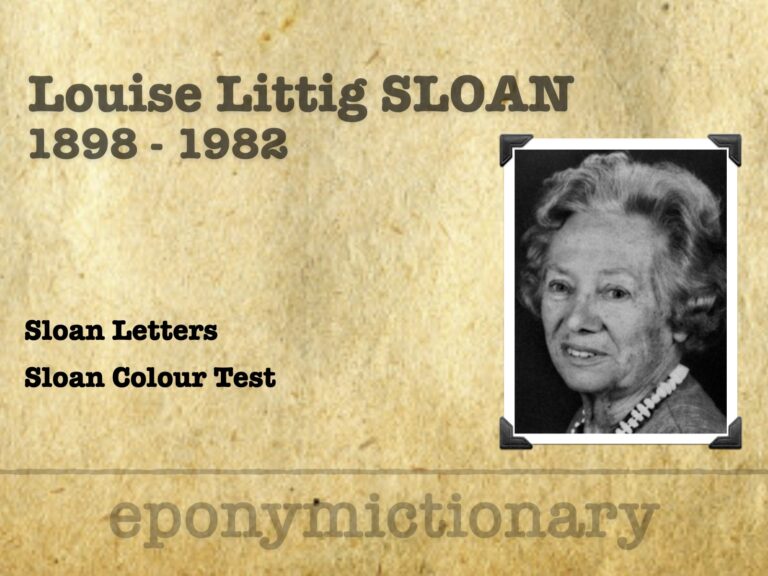
Louise Sloan
Louise L. Sloan (1898–1982) developed Sloan optotypes (LogMAR), pioneering colour vision screening, perimetry, and low-vision rehabilitation

Louise L. Sloan (1898–1982) developed Sloan optotypes (LogMAR), pioneering colour vision screening, perimetry, and low-vision rehabilitation

Barlow syndrome (primary billowing mitral leaflet syndrome (BMLS)). Auscultatory findings of late systolic murmur with non-ejection ('mid-late') systolic click
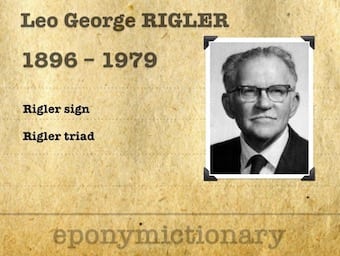
Leo George Rigler (1896-1979) was an American radiologist. Eponymously affiliated with Rigler sign; Rigler triad; Rigler notch sign; Hoffman-Rigler sign
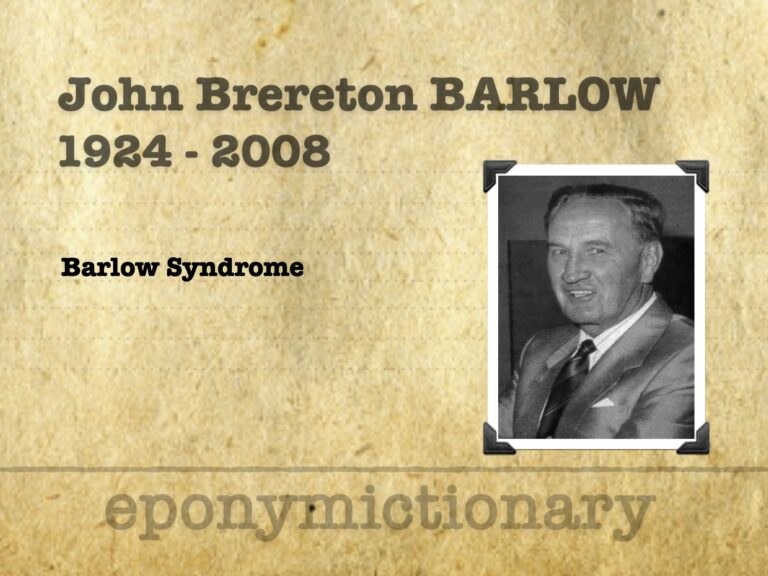
John Brereton Barlow (1924-2008) was a South African cardiologist. Barlow described mitral valve prolapse (eponymously known as Barlow’s syndrome) in 1963
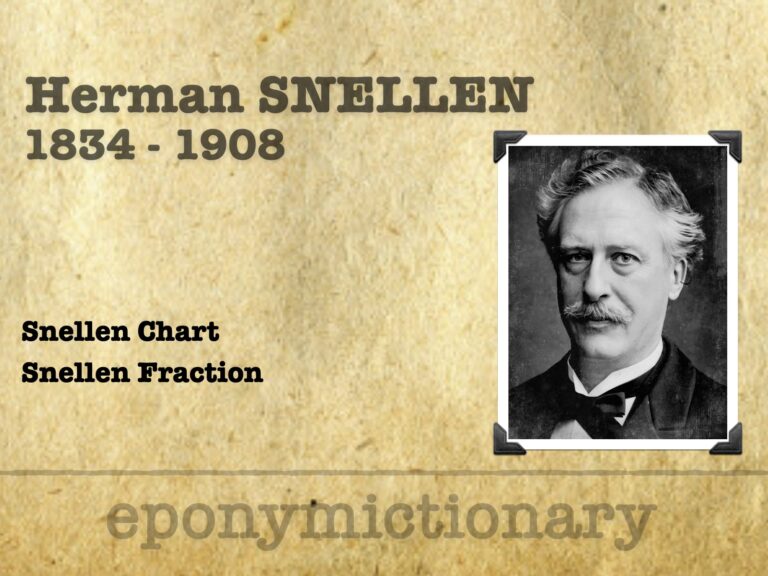
Herman Snellen (1834–1908): Dutch ophthalmologist who created the Snellen chart and standardized visual acuity testing, transforming eye care worldwide
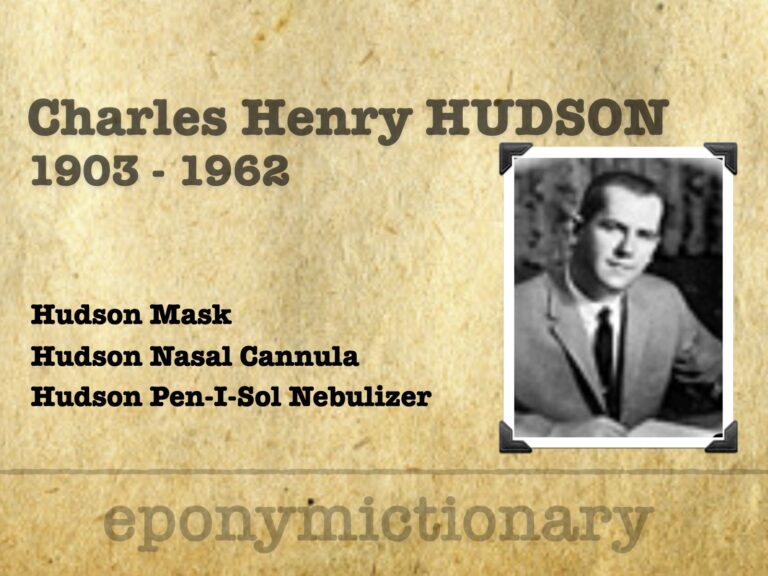
Biography Medical Eponyms Hudson Mask Patented in 1958 by Charles H. Hudson (US Patent No. 2,843,121), the “Hudson mask” became the archetype of the disposable oxygen face mask Designed for low-flow oxygen therapy (5–10 L/min), delivering approximately 35–60% FiO₂. Constructed from…
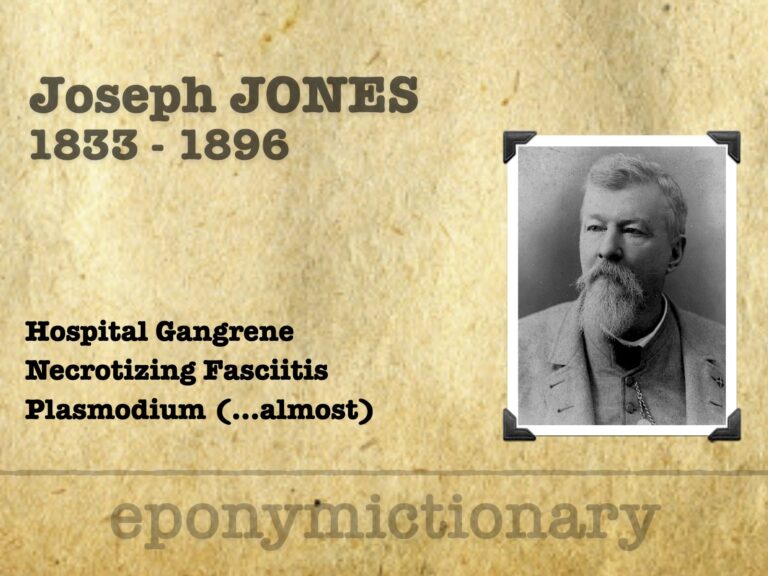
Joseph Jones (1833–1896), Confederate surgeon who defined hospital gangrene, advanced malaria research, and shaped Southern public health

Charles Foix (1882–1927), French neurologist; defined brainstem vascular syndromes, Foix–Alajouanine syndrome, and helped shape modern cerebrovascular neurology.
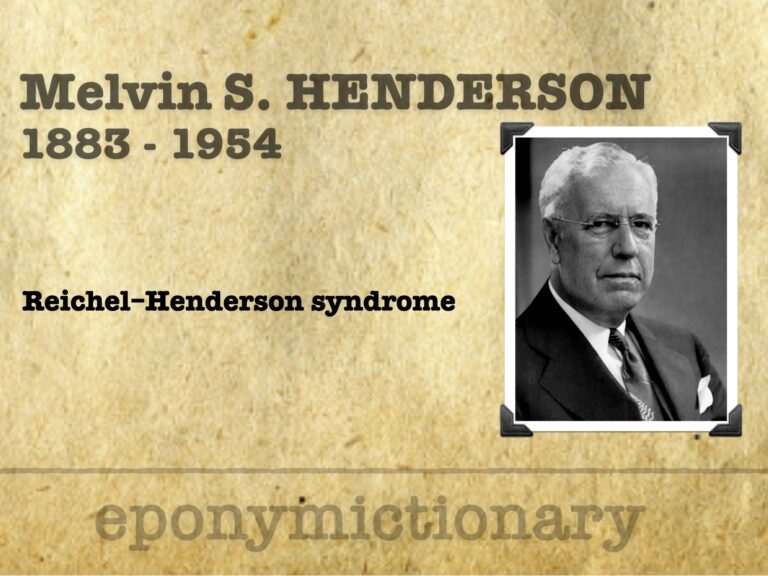
Melvin Starkey Henderson (1883–1954), founding Mayo orthopaedist and ABOS president, co-described Reichel–Jones–Henderson syndrome (synovial chondromatosis).

Friedrich Paul Reichel (1858–1934), German surgeon, synovial osteochondromatosis and co-developed the Reichel-Polya gastric operation.
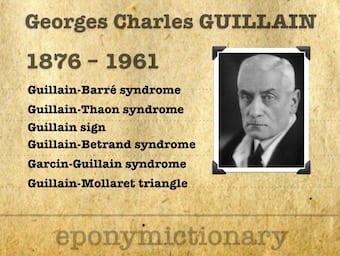
Georges Charles Guillain (1876-1961) was a French neurologist. Multiple neurology-related eponyms including Guillain-Barré syndrome

Woldemar Mobitz (1889-1951) was a Russian-German physician. Applied mathematical approach to arrhythmias 1924 Mobitz Type I and II AV Block